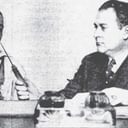Critical developments in the modern history of capital punishment in the United States are examined through a biographical sketch of Anthony Amsterdam (pictured), one of the nation’s most respected death penalty attorneys and legal scholars, in the latest edition of New York University’s Law School Magazine. Prof. Amsterdam argued Furman v. Georgia before the U.S. Supreme Court in 1972, resulting in the overturning of all death penalty laws and the sparing of over 600 inmates on death row. The article, “A Man Against the Machine” by Nadya Labi, recounts Tony Amsterdam’s work with the NAACP Legal Defense Fund leading up to Furman and follows his legal journey through the Court’s Gregg v. Georgia decision reinstating capital punishment in 1976, and into to today’s death penalty debate. Amsterdam recalled his reaction upon hearing of the Furman decision: “You represent people under sentence of death, you’re always walking around with a dozen, 50 lives on your shoulders.” What he remembered was: “The feeling of weight being lifted, knowing that these guys…you worry about each and every one separately. I felt free for the first time in years. I thought, ‘That job is done. Those guys are gonna live.’ ”
Today, Prof. Amsterdam is the Edward Weinfeld Professor of Law at New York University Law School, and he has played a significant role in shaping more than 30 years of death penalty litigation and in training future capital defenders. He is known as an accessible and trusted “special resource” for death penalty attorneys, and his students have worked on a number of high-profile appellate cases, including Atkins v. Virginia and Roper v. Simmons — the Supreme Court cases that ended the death penalty for those with mental retardation and juvenile offenders, respectively.
The article concludes with a prediction from David Kendall, former counselor to President Bill Clinton and Amsterdam’s long-time friend and colleague, “When this country repudiates the death penalty, as it will, people will look back at him and say, he devised the campaign that led to this.”
(NYU Law School Magazine, Autumn 2007). Read the article. See Articles, Resources and History of the Death Penalty.
News
HISTORY: The Death Penalty Through the Life of Anthony Amsterdam
By Death Penalty Information Center
Posted on Sep 13, 2007 | Updated on Mar 14, 2025
Citation Guide



